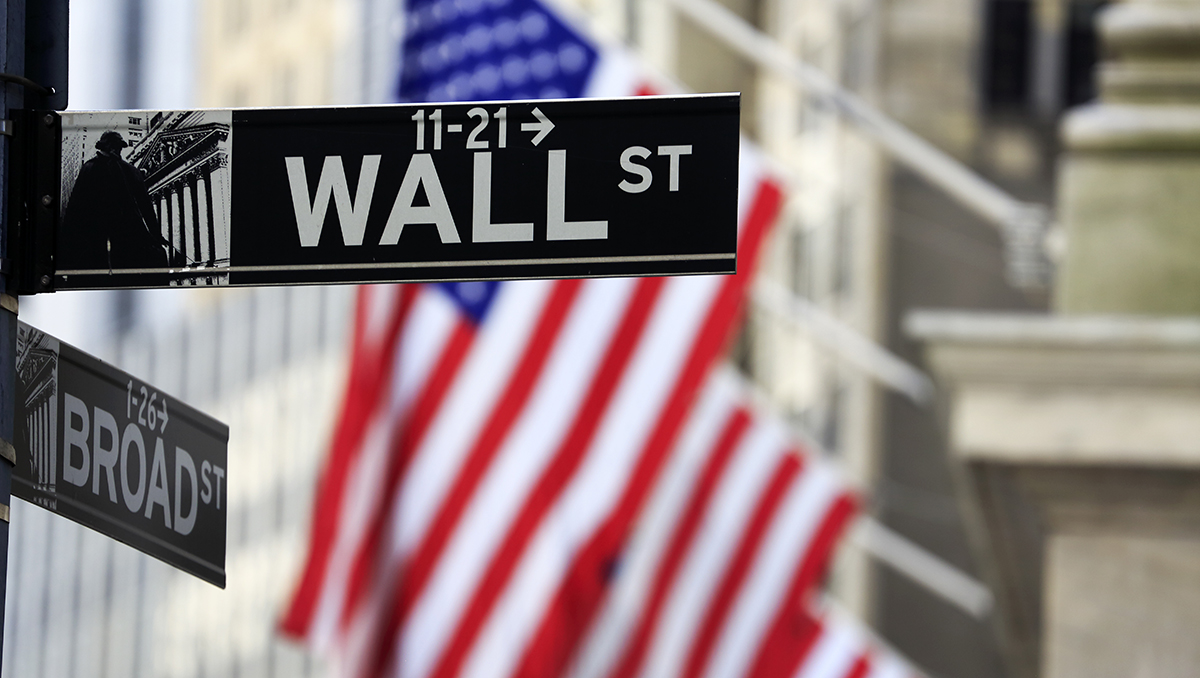[ad_1]
“There can be few fields of human endeavor in which history counts for so little as in the world of finance. Past experience, to the extent that it is part of memory at all, is dismissed as the primitive refuge of those who do not have the insight to appreciate the incredible wonders of the present.” — John Kenneth Galbraith
After four years of painstaking research, writing, and editing, I am happy to report Investing in U.S. Financial History is now available online and in select bookstores in the United States and across the world. I hope it provides educational value to all investors regardless of their experience and serves as a reliable reference that helps readers contextualize the present and envision the future.
The story begins in 1790 with Alexander Hamilton’s financial programs and ends in March 2023 with the US Federal Reserve’s ongoing effort to contain inflation. Sprinkled throughout are brief “points of interest” that explain critical investment, economic, and financial principles. Despite the passage of more than two centuries, many principles are just as relevant today as they were when the United States was in its infancy.
Here I provide a sneak peek by sharing three excerpts that each illuminate one important financial concept. The first considers the “Paradox of Speculation,” or how speculation in US securities markets produces hardship for many while also driving national progress. The second examines a challenge that most investment professionals eventually confront: whether to abandon the status quo after it has outlived its usefulness or continue to extract value from clients for outdated services that no longer deliver any. This dilemma has recently become especially acute for investment consultants serving institutional plan trustees.
The final principle reveals how many “financial firefighters” often endure widespread contempt and ridicule despite considerable personal sacrifice. This phenomenon has persisted for more than 200 years and affected Hamilton, J. Pierpont Morgan, Hetty Green, Paul Volcker, and Hank Paulson, among others.
Whether you choose to read Investing in U.S. Financial History in full, I hope these excerpts provide value that far exceeds the time you invest in reading them.
1. The Paradox of Speculation
The Principle
Speculative activities by investors in the United States cause both suffering and prosperity. This paradox of speculation is an important concept because we often focus inordinately on the pain, which tends to be more salient in the short term. In contrast, decades may pass before society reaps the benefits that speculative activities have helped create. This paradox has existed since the very first securities were traded on Wall Street, soon after the initial public offering (IPO) of the First Bank of the United States.
The Excerpt
“He [the American] launches with delight into the ever-moving sea of speculation. . . . Some individuals lose, but the country is the gainer; the country is peopled, cleared, cultivated; its resources unfolded; its wealth increased.” — Michel Chevalier (1836)
The emergence of Wall Street as the nation’s financial capital was aided by the peculiar paradox of speculation. From its very inception, Wall Street was the preferred venue for US speculators. In the 1700s, they were called stock jobbers. In the 1800s, they were called stock plungers. In the early 1900s, they were called stock operators. And now they are a mix of analysts, hedge fund managers, and the latest gurus on CNBC.
America has always and likely will always have a love/hate relationship with Wall Street speculators. Their actions can create great wealth or great misery for those who follow their lead. Yet at the same time, the repetitive process of mania, failure, and renewal has made markets more liquid, more efficiently priced, and ultimately more attractive to investors. This, in turn, has enabled American entrepreneurs to acquire funding for countless ventures. Without Wall Street, many of the world’s greatest inventions would likely remain locked in the brains of people who have long since passed.
The genius and folly of American speculators could fill several volumes. Each time, you will observe the odd paradox of speculation. Every mania, bubble, fraud, crash, and depression was followed by renewal and advancement. It is this paradox that has helped drive American progress. The constant battling between bulls and bears also created a safe but unappreciated wake that inspired the greatest financial innovation of the 20th century: the index fund.
2. The Long-Term Rewards of Honesty and the Destructive Fear of Obsolescence
The Principle
To serve clients well, investment advisers must continuously reevaluate whether their services will add value in aggregate. If advisers discover they do not — and they value their integrity — they must voluntarily abandon their existing service model and search for new ways to add value. Alternatively, they can cling to the status quo and hope clients never discover that their claimed value proposition no longer exists. History reveals that those who give up on the status quo are the same people who invent new ways to add value and, in doing so, benefit themselves as much as their clients. But those who stick with outdated practices eventually see their business evaporate — and sacrifice their personal integrity along the way.
Merrill Lynch’s bold effort to restore the brokerage industry’s reputation in the late 1940s demonstrates this dynamic.
The Excerpt
“The customer may not always be right, but he has rights. And upon our recognition of his rights and our desire to satisfy them, rests our chance to succeed.” — Charles Merrill, founder of Merrill Lynch
When faced with moral dilemmas, characters in old cartoons consulted with an imaginary devil on one shoulder and an angel on the other. The devil encouraged acts that were wrong but self-serving, while the angel encouraged them to do what was right but seemed self-destructive. In the long term, the angel’s advice always proved to be both right and rewarding, while the devil’s advice provided short-term relief at the expense of long-term self-destruction.
Investment professionals are constantly presented with this dilemma. Serving clients honestly — which is in every investment professional’s long-term interest — requires accepting truths that seem self-defeating in the moment. This is because the truth forces them to recognize their limitations, alter their behavior, and adapt to a new reality. Those who respond well to these existential dilemmas place themselves in an unexpectedly powerful position because an investment professional’s greatest asset has always been and always will be their willingness to communicate the truth. Over many years, adherence to this principle ebbs and flows. During periods in which collective fear of obsolescence dominates, the few who buck the trend and communicate honestly with their clients are rewarded beyond their wildest expectations.
Merrill Lynch’s commitment to honesty, integrity, and transparency rehabilitated the reputation of Wall Street in the decades following World War II. The firm, its employees, its customers, and Americans in general benefitted from their bold decision. Sadly, their commitment eventually weakened, as it almost always does as companies age, and Merrill Lynch nearly disappeared forever beneath the wreckage of the global financial crisis (GFC). Merrill Lynch survived as a subsidiary of Bank of America, but its reputation is not what it was in the 1950s and 1960s. History demonstrates that it is never too late to regain the trust of Americans, but doing so requires firms to open-mindedly explore what customers need and humbly accept the limits of what they can provide. It is unclear if Merrill Lynch will resurrect the principles of Charles E. Merrill and Winthrop Smith, but if they do, their employees and customers will once again enjoy benefits that they never anticipated were possible.

3. The Unappreciated Sacrifices of Financial Firefighters
The Principle
The United States has experienced various manias, panics, and crashes in its history. The most severe created widespread misery both in the United States and beyond its borders. During a financial crisis, politicians, regulators, and private citizens must band together and create innovative solutions to minimize the damage. Those who volunteer for financial firefighting duty often make two distinct sacrifices. First, they endure a seemingly endless series of sleepless nights as they work to put out the conflagration. Second, they open themselves up to unfair personal attacks from the media and political rivals.
The Excerpt
“Our political tradition sets great store by the generalized symbol of evil. This is the wrongdoer whose wrongdoing will be taken by the public to be the secret propensity of the whole community or class. We search avidly for such people, not so much because we wish to see them exposed or punished as individuals, but because we cherish the resulting political discomfort of their friends.” — John Kenneth Galbraith
Financial panics, frauds, and other forms of reckless behavior are painful but enduring features of every financial system. But what makes them more tragic is the tendency of Americans to demonize individuals who make enormous sacrifices to prevent financial crises from devolving into depressions. Many of America’s most admirable financial leaders suffered this fate. Alexander Hamilton endured relentless attacks while crafting a financial system to resuscitate the nation’s damaged credit in 1790. Hetty Green was labeled the “Witch of Wall Street” despite her selfless acts to support financiers and the entire city of New York when they were most vulnerable during the frequent panics of the late 1800s. J. Pierpont Morgan was excoriated by the media and congressional representatives only a few years after orchestrating an extraordinary rescue during the Panic of 1907.
Many financial firefighters during the GFC suffered similar fates. It is only by reading the memoirs of Hank Paulson, Tim Geithner, Ben Bernanke, and other financial leaders that it is possible to appreciate their noble intent and personal sacrifice during the GFC. Nobody is perfect — and these individuals admitted many of their mistakes — but impugning their character is unfair. America’s financial firefighters suffer from the sacrifices they make to extinguish the flames, while simultaneously bearing undeserved insults and character assassinations from those observing the infernos — usually from a safe distance. These heroes fight financial fires with full awareness of the reputational risks, which makes their sacrifices especially noble.
For more from Mark J. Higgins, CFA, CFP, check out Investing in U.S. Financial History: Understanding the Past to Forecast the Future from Greenleaf Book Group Press.
If you liked this post, don’t forget to subscribe to Enterprising Investor and the CFA Institute Research and Policy Center.
All posts are the opinion of the author. As such, they should not be construed as investment advice, nor do the opinions expressed necessarily reflect the views of CFA Institute or the author’s employer.
Image credit: ©Getty Images / Bruce Yuanyue Bi
Professional Learning for CFA Institute Members
CFA Institute members are empowered to self-determine and self-report professional learning (PL) credits earned, including content on Enterprising Investor. Members can record credits easily using their online PL tracker.
[ad_2]
Source link








 Bitcoin
Bitcoin  Tether
Tether  XRP
XRP  USDC
USDC  Lido Staked Ether
Lido Staked Ether  Dogecoin
Dogecoin  LEO Token
LEO Token